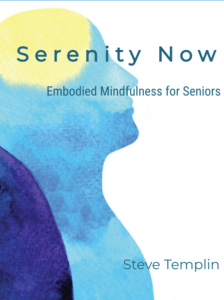Slow breathing is the most direct and dependable strategy for calming your mind that comes to mind. When in doubt about what to do to create more clarity, calm, or focus, I’ll remind myself, hopefully sooner than later, to breathe more slowly.
I say that it’s ‘almost’ a quick fix because it does take some time to learn and for your brain to develop some new circuitry. But once that new circuitry is available it becomes easier and quicker to shift emotional gears and find calm.
Let’s just do it. Tune into your belly and let it relax while you breathe in through your nose for up to five seconds and then exhale. Your breathing should be gentle and quiet. You’re not breathing in a lot of air. Even though you’re breathing in less air you’re absorbing more oxygen. Less effort, less huffing and puffing, less stain equates with better physiology.
Breathing more slowly, ideally through your nose, brings more balance to your autonomic nervous system (ANS), increases oxygenation to your brain and other tissues, helps to restore calm and emotional balance, and inhibits inflammatory signaling.
And we can accomplish all of the above and more without the addition of a single drug or vitamin.
Once you know the basic premise and just enough science, you know enough. The next step is to practice breathing slow so you’re actively updating your brain and nervous system so you can have more control over your life.
Let’s practice again. Sit comfortably, relax your belly and breathe in gently and quietly through your nose. Breathing in more slowly than you normally breathe is the key. And breathing in for up to five seconds is ideal. If five seconds imposes a strain, just breathe less until five seconds becomes easy. Practice this for five breaths a few times a day. Then, when you’re ready, practice for ten breaths.
At some point you can practice for five, or ten, or even twenty minutes. However, beginning with a practice of five breaths, a few times a day, is a very big deal.
Every time that you breathe slower, which means more efficiently, you’re teaching your brain that your early life, faster than necessary, stress-induced breathing pattern is no longer necessary.
In the last post, Slow Breathing for Alzheimer’s Prevention, I wrote about a recent study showing that twenty minutes of slow breathing daily lowered levels of the harmful protein amyloid beta in the bloodstream.
But as I’ve suggested earlier, twenty minutes isn’t necessary to make a significant change. Another recent study showed that a five minute practice daily influenced cognitive abilities significantly.
And if five minutes seems like a drag, how about twenty seconds. Yes, twenty seconds. A study from UC Berkeley demonstrated that a mere twenty seconds of daily mindful connection with the breath and body produced significant benefits.
Best of luck with your slow breathing practice.


 Steve is a retired Doctor of Oriental Medicine, Acupuncture Physician, and HeartMath Trauma-Sensitive Certified Practitioner with over 35 years of clinical experience in the fields of Energy Medicine, Energy Psychology, and Biofeedback.
Steve is a retired Doctor of Oriental Medicine, Acupuncture Physician, and HeartMath Trauma-Sensitive Certified Practitioner with over 35 years of clinical experience in the fields of Energy Medicine, Energy Psychology, and Biofeedback. 